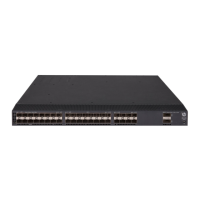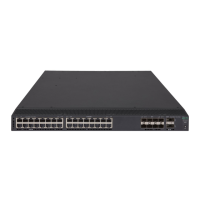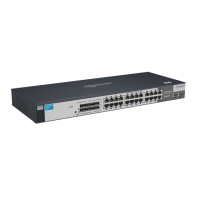47
Setting the maximum number of concurrent login
users
Perform this task to set the maximum number of concurrent users who can log on to the device through a
specific protocol, regardless of their authentication methods. The authentication methods include no
authentication, local authentication, and remote authentication.
To set the maximum number of concurrent login users:
Step Command Remarks
1. Enter system view.
system-view N/A
2. Set the maximum number of
concurrent login users.
• In non-FIPS mode:
aaa session-limit { ftp | http |
https | ssh | telnet }
max-sessions
• In FIPS mode:
aaa session-limit { https | ssh }
max-sessions
By default, the maximum number of
concurrent login users is 32 for
each user type.
Configuring a NAS-ID profile
By default, the device sends its device name in the NAS-Identifier attribute of any RADIUS requests.
A NAS-ID profile enables you to send different NAS-Identifier attribute strings in RADIUS requests from
different VLANs. The strings can be organization names, service names, or any user categorization
criteria, depending on the administrative requirements.
For example, map the NAS-ID companyA to all VLANs of company A. The device will send companyA
in the NAS-Identifier attribute for the RADIUS server to identify requests from any Company A users.
You can apply a NAS-ID profile to portal- or port security-enabled interfaces. For more information, see
"Configuring portal" and "Configuring port security."
A N
AS-ID can be bound with more than one VLAN, but a VLAN can be bound with only one NAS-ID.
To configure a NAS-ID profile:
Ste
Command
Remarks
1. Enter system view.
system-view N/A
2. Create a
NAS-ID profile
and enter
NAS-ID profile
view.
aaa nas-id profile profile-name N/A
3. Configure a
NAS-ID and
VLAN binding
in the profile.
nas-id nas-identifier bind vlan vlan-id
By default, no NAS-ID and VLAN
binding exists.

